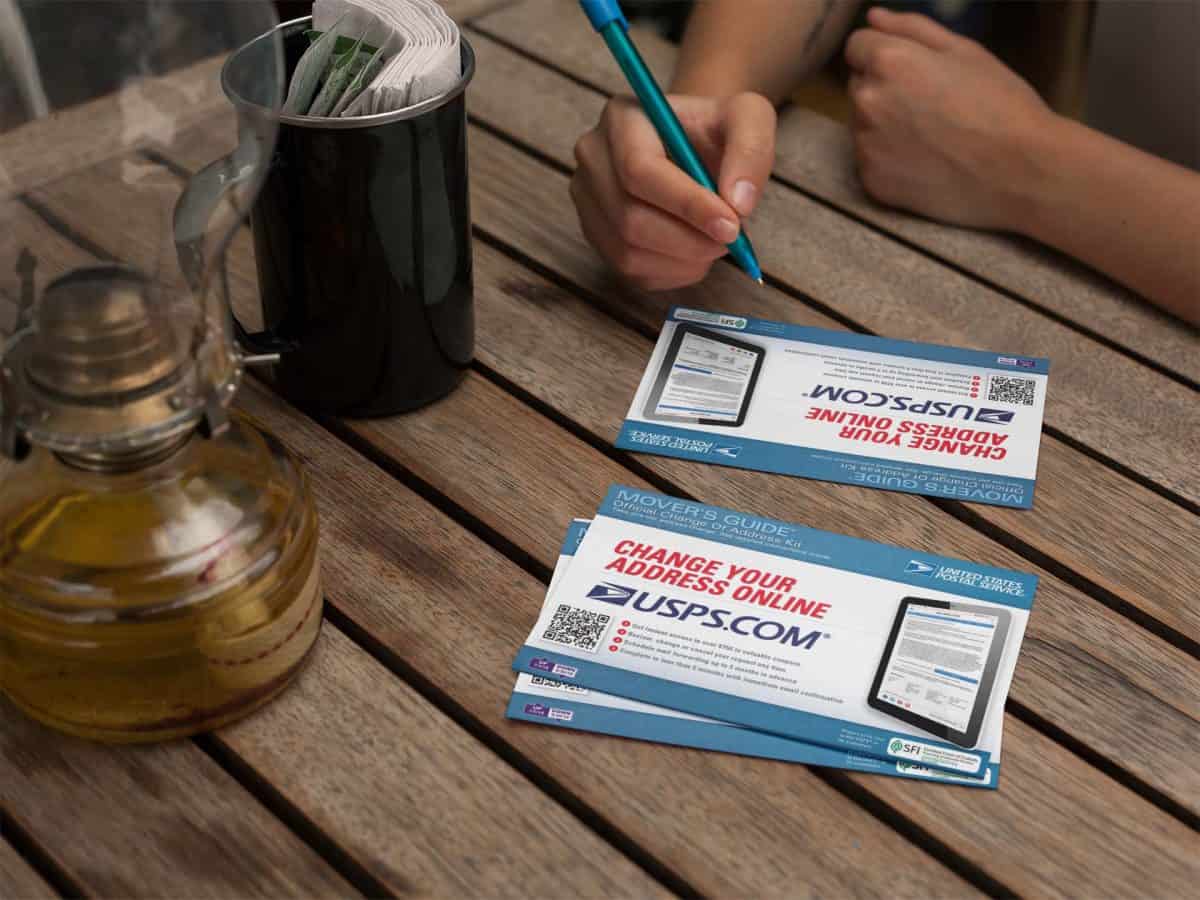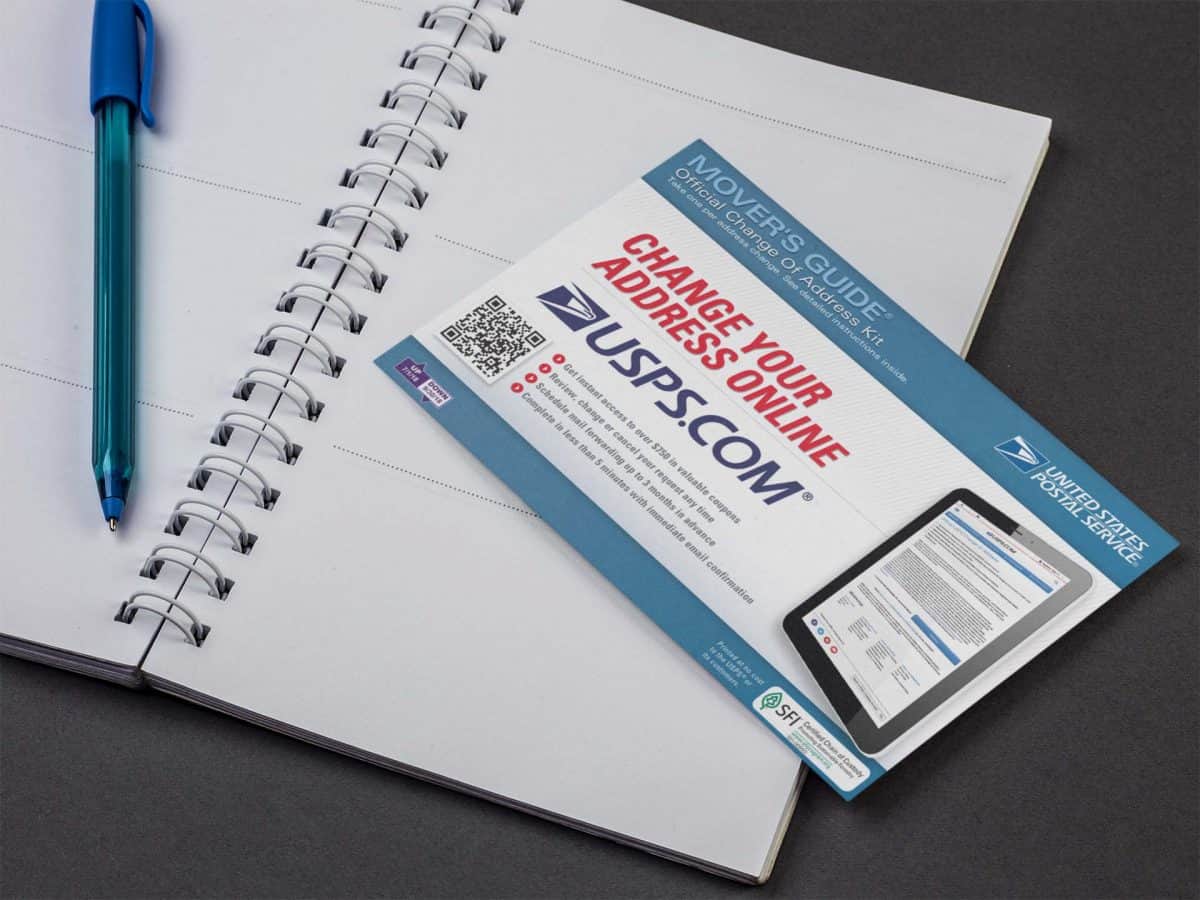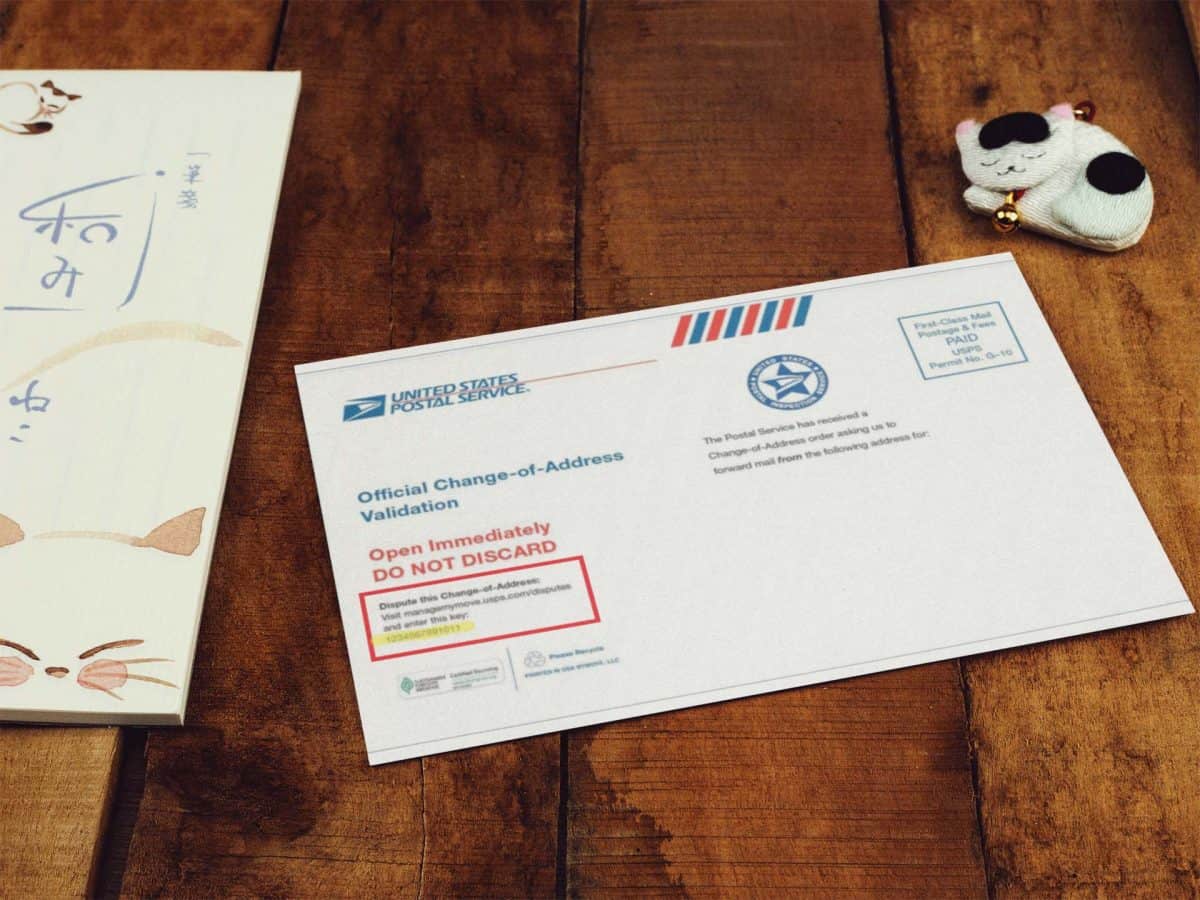USPS Change of Address and Name (Mail Forwarding Guide)

When changing your name due to marriage, divorce, or other reasons, ensuring prompt delivery of your mail (letters and packages) in both your old and new names is critical.
But how do you guarantee this happens? Two questions:
- Are you moving?
- Have you already moved?
If you've answered yes to either question, you should submit a change of address (COA) with the United States Postal Service (USPS). You could even schedule the start date.
Whether you answered yes or no, two questions remain:
- Have you changed your name?
- Do you plan to change your name?
Answering yes to either moving or not prompts further questions about potential outcomes, including mail reception in your old and new names.
Three key credentials need updating when changing your name:
- Social security card
- Driver's license or REAL ID
- U.S. passport (assuming you have one)
Most people understand this. But what happens to your mail? There's no USPS ID card. So will your name change affect the delivery of your mail? The outcome is vague.
Let's clarify the answer now…
Do you have to change your name with the post office?
Changing your name alone doesn't impact mail delivery. But mixing name change with an address change demands action to avert failed deliveries.
1. Your address is staying the same
You don't have to change your name with the post office if your address isn't changing. You'll continue receiving mail in your old and new name.
There's nothing for you to do. You don't have to alert senders. You don't have to notify the post office. Your mail will continue arriving without interruption.
The USPS ignores the recipient name by default when delivering mail unless there's a change of address on file. Otherwise, mail forwarding procedures take place.
2. Your address is changing
If you're moving, tell the USPS where they should reroute your mail by filing out a change of address form. You should document your name change when filling out this paperwork.
File a separate change of address for every name variation. For example, if your name change is because of marriage, file a request in your maiden name and married name.

While cumbersome, multiple filings help avoid undeliverable return to senders.
This point is worth repeating…
To receive forwarded mail in your current and prior names—maiden name, married name, divorced name, etc—you must submit a separate change of address for each name.
You can file a change of address for nicknames and abbreviations too; it's not just for legal names. For instance, if your name is Isabel, you can file for Izzy, Bella, etc.
If you hyphenate your name, consider completing three packets for your maiden name, hyphenated name, and spouse's last name solo (as a precaution).
Filing a change of name and address
You may submit a change of address online, by mail, or at a post office.
Caution: When moving to an international address, register your change of address in person at a U.S. Post Office; you can't do this change on the Internet or by mail.
1. Filing online
Completing your change of address online via USPS Change-of-Address requires an:
- Email address
- Mobile phone number to receive a one-time verification text
- Debit or credit card
- Excludes prepaid cards
- Used to verify your identity
- Accepts Visa, MasterCard, Discover, and American Express
You'll get a "confirmation code" via email. This code (along with your new address zip code) allows you to review, edit, cancel, or extend your change of address request.
The USPS will charge your debit or credit card a nonrefundable $1.10 identity validation fee per request. So if you need mail forwarded to two names, you must pay $1.10 twice.
2. Filing by mail or at a post office
Changing your address offline by mail or at a local post office is similar:
- Get one or more Mover's Guide packets from a post office.
- Complete the inner PS Form 3575 with black or blue ink.
- Hand it to a postal clerk or mail it (no postage necessary).

The free paper Mover's Guide doesn't require a fee, credit card, or email address. The form doesn't even offer a space for email. There's no ID verification either.
You may secure Mover's Guide packets at any post office. (No ID required.) They're not often kept in the lobby, so ask the postal clerk for one or more copies.
You can't download the Mover's Guide or PS Form 3575; visit the post office instead.
3. What to expect after filing your change of address
A Move Validation Letter (MVL) will arrive at your old address quick. It confirms your order was successful. It has instructions to dispute the change order too.

A Customer Notification Letter (CNL) or Welcome Kit will arrive at your new address a week before forwarding begins. Use the confirmation code within to modify or cancel your order.
You may apply online to get your confirmation code faster via email. You'll still get the code from the postal mailed Welcome Kit.
Options when filing a change of address
Next, we'll explain your options when pursuing both a change of name and address.
1. Filing status
You can file a change of address as either a:
- Family
- Individual
2. Filing as a family
You should file one change of address as an "entire family" if every household member:
- Has the same last name
- Has not or will not change their name (red flag!)
- Is moving to the same new address
The "head of the household" should file using their full name and signature.

Yet the family route only allows one filing; this will not work if any household member has changed their name. You must file as an individual to accommodate your old, current, and new name.
3. Filing as an individual
Reasons to file as an individual:
- You live alone.
- Some household members aren't moving.
- Some household members have different surnames.
- You have more than one last name that needs forwarding.
4. New address
You can set your new mailing address to a:
- Residential address
- Business address
- International address
- PO Box
- Hospital
- Military address
- General delivery address
5. Start forwarding date
You can schedule the start forwarding date 30 days in the past or up to three months in the future. (Yes, it can be retroactive or postdated.)
You'll start receiving mail at your new address 7 to 10 postal business days (excluding Sundays and federal holidays) after your start date or filing date (whichever comes last).
6. End forwarding date
Mail forwarding duration can be:
- Temporary—15 days to six months, extendable to one year
- Permanent—one year, extendable up to 18 additional months
The end forwarding date is offset against the start date. For example, a permanent forwarding start date scheduled three months from today will end 15 months from today.
You must set a specific stop date for temporary forwarding. You can use an online date calculator to figure out the duration or calculate a date range.
7. Extended mail forwarding
You may lengthen temporary forwarding beyond the max first six months to a full year. (Well, technically, 364 days is the true upper limit.)
On August 1, 2020, the USPS began a three-year test that offers the option to extend permanent forwarding beyond the original 12 months. On July 10, 2022, this market test became a permanent product, price unchanged. This optional service costs:
- $19.95 for six months
- $29.95 for 12 months
- $39.95 for 18 months
That equals a maximum of 30 months—year one plus 18 extra months. You may choose extended mail forwarding during initial sign-up or before forwarding expires.
When customers submit a Change of Address request, we have some promotional language that encourages them to take advantage of Extended Mail Forwarding
Tiffany Jesse, USPS Product Implementation Manager
The extension period can't exceed 18 months. If you select six or 12 months starting off, you may only renew in further six-month increments.
FYI, most people choose the six-month extension.
Opting for extended mail forwarding provides a safety net to capture annual mailings that might get missed, such as insurance papers and renewal notices.
What about FedEx, UPS, and DHL?
FedEx, UPS, and DHL deliver to the address, not the name on your package. Your name change won't affect such delivery services.
Conclusion
If you plan to change your name and address, update both your name and address with the U.S. Postal Service so that you'll continue receiving mail in your old and new name.
By following our simple tips, you can avoid delivery problems and make sure that you receive your mail fast and without issue. Fending off dreaded return to sender debacles.
Beyond sorting out your USPS name change, you could use our online name change kit to guide you through changing your name across various government documents.

I just found out yesterday that my 38/year old daughter had all my mail transferred to another address while I was away. She did my taxes for me online.
Two years ago and I haven't received any of my stimulus checks. She was also able to again my state ID and change the address on it too.
There wasn't any reason to do this. My husband (boyfriend) was at our apartment the entire time. He would of kept my mail for me.
How can another person change your address without your permission or knowledge? She did the same thing to my bank account. Wells Fargo allowed her to do transfers on my account and put into another bank (Varo online banking.)
I was unaware of this for almost a year she was then able to close my Wells Fargo account and have my disability check transferred to Varo Bank. Transferred money from my bank account into my Varo savings account, then transferred them into her Varo account.
This procedure happened several times a month for over a year. She wiped me out this happened in 2020 and than again in 2022 and 2023.
Varo bank says I had given permission for all of this. I wrote and told than not to allow her to have access to my account again no more transfers from my account to hers.
That was in 2021 and they still allowed her to make transfers several time a month emptying my savings and my bank account.
I have been diagnosed with paranoid schizophrenia and this seems to make her think that she has this controls over me. Is there an answer to the end of this? My only source of income is my 954.00 disability check each month.
I could use some advice. I love my daughter. She is my only living relative. And we used to be very close. Now I don't even know were she lives and she lives I believe in the same town. I don't know were she works either. But she knows everything about me.
I don't want to put her in jail, but I could really would like to see and hear some remorse. Far as she's conceded she had my permission to do all of this. I'm so overwhelmed be her actions that I can't even talk to her about it.
She's a lot stronger and extremely intelligent she's able to talk me down she knows how much I love and care about her and don't want to list the little we have so this is here power over me.
You may want to consult an identity theft lawyer to provide you advise on how to repair your identity and deal with your daughter.
You can review the USPS identity theft and FTC identity theft websites for assistance.
You can report stimulus check theft.
I'm sorry to hear you've been going through this trouble. Identity theft is terrible, whether it's from a stranger or, in your case, a family member.
Here's an article that discusses family member identity theft and the FTC's recovery options.
I got married and finally got a chance to change my name last name over to everything. I was just wondering if I would have to go to my local post and change my name there for my mail and if so what would the paper look like.
Hi Cassandra. You only have to change your name if you've moved. And you don't have to visit your local post office. You can make the change online. If you do choose to go in office, request a paper mover's guide packet.